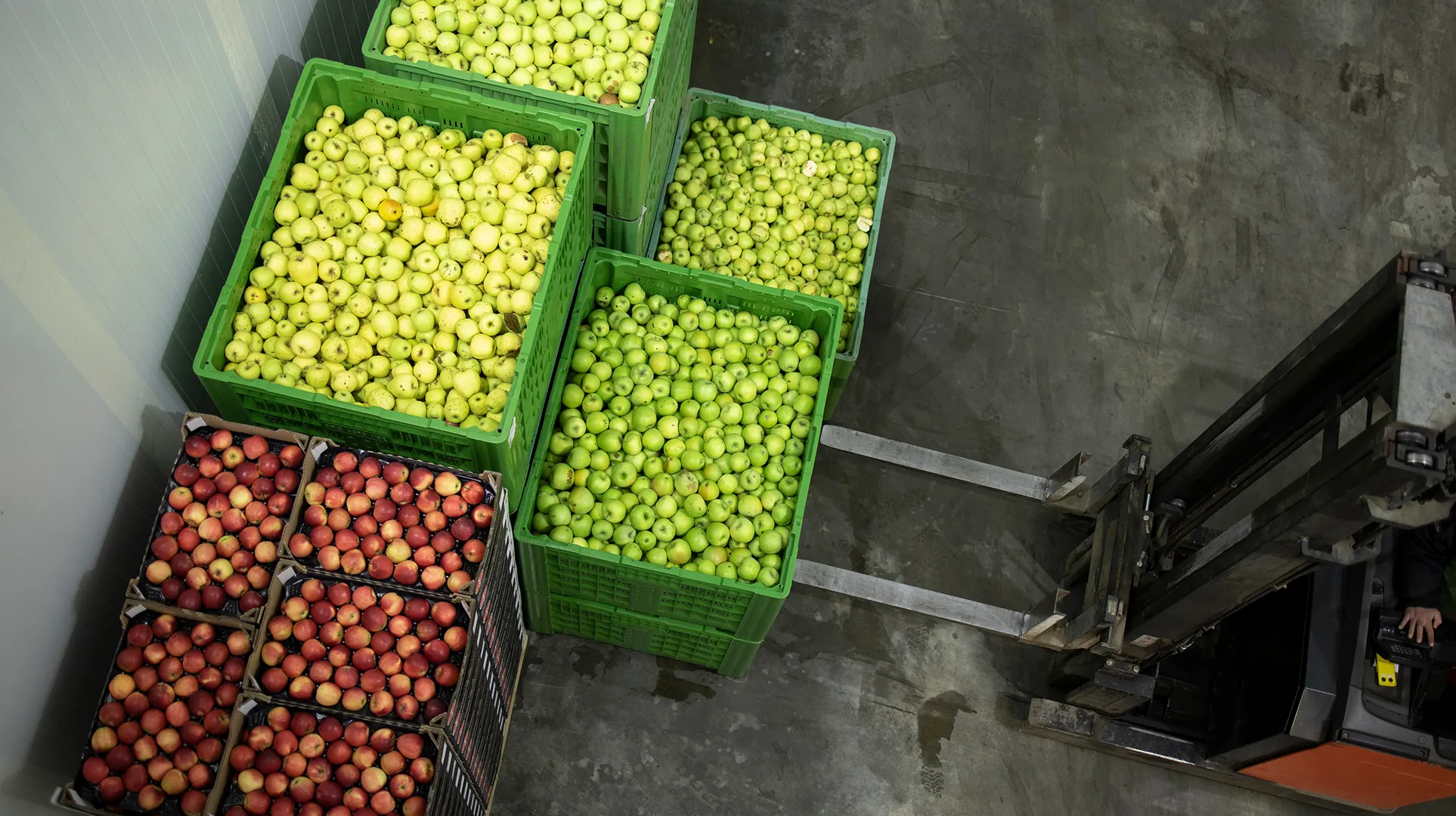Introducción: El papel de la cobertura natural en el sector alimentario
El sector alimentario se enfrenta a varios desafíos únicos a la hora de gestionar el riesgo cambiario: inventario de productos perecederos, alta estacionalidad, fluctuación de los precios mundiales de las materias primas y una red de proveedores y compradores internacionales. Para los responsables de la toma de decisiones financieras (incluidos los directores financieros, los gestores financieros y los líderes de tesorería), la cobertura natural ofrece un enfoque práctico y operativo de reducción del riesgo. Este artículo explora cómo funciona específicamente la cobertura natural en la industria alimentaria, describe sus ventajas y limitaciones y ofrece medidas prácticas para su implementación.

¿Qué es la cobertura natural?
La cobertura natural se refiere a alinear las entradas y salidas de divisas extranjeras para compensarse entre sí, sin utilizar derivados financieros. Por ejemplo, una empresa láctea del Reino Unido que compra leche en polvo en Europa (paga en euros) y exporta queso a Alemania (facturado en euros) compensa naturalmente su exposición al euro. Al hacer coincidir los ingresos y los costes en la misma moneda, el riesgo cambiario se reduce sin necesidad de instrumentos contractuales como contratos a plazo u opciones.
Por qué las empresas alimentarias utilizan coberturas naturales
- Simplifica la administración de divisas: Reduce el volumen de conversiones de divisas.
- Minimiza los costos de transacción: Menos conversiones significan menos comisiones bancarias y menos exposición a diferenciales ocultos.
- Mejora la protección de los márgenes: Reduce el impacto de las oscilaciones cambiarias en el beneficio bruto, que es fundamental en un sector sensible a los precios y con márgenes bajos.
- Se alinea con la estacionalidad: Muchos contratos de alimentos están vinculados a los ciclos de cosecha o envío, lo que permite compensaciones naturales dentro de los períodos.
Cómo funciona la cobertura natural en la práctica
Las estrategias de cobertura naturales varían según la estructura y el perfil cambiario de la empresa. Estos son algunos ejemplos del sector alimentario:
1. Adquisiciones y ventas en múltiples divisas
Un importador de alimentos congelados del Reino Unido compra verduras de Polonia (PLN) y las vende en supermercados de Finlandia (recibe euros). Al negociar para comprar en euros (siempre que sea posible) y vender en euros, la empresa ajusta las entradas y salidas y mantiene su exposición cambiaria estrechamente igualada.
2. Diversificar la base de clientes y proveedores por moneda
Supongamos que un fabricante de bebidas obtiene naranjas de España y Sudáfrica (EUR y ZAR). La reestructuración de los acuerdos de suministro para que las compras de materias primas se inclinen hacia las monedas que corresponden a sus mercados de exportación (por ejemplo, vender en ZAR a socios en Sudáfrica) crea compensaciones naturales y suaviza la volatilidad de las pérdidas y ganancias provocada por los cambios cambiarios repentinos.
3. Estructuras internas de refacturación
Los grupos alimentarios multinacionales más grandes pueden utilizar los centros de tesorería regionales para internalizar los flujos de divisas y volver a facturar las transacciones dentro de la empresa en monedas equivalentes para reducir las exposiciones netas. Este enfoque hace que la presentación de informes y la contabilidad del riesgo cambiario sean más transparentes, pero requiere una coordinación cuidadosa entre las filiales y los departamentos de tesorería.

Ventajas de la cobertura natural para la industria alimentaria
- Sin costos derivados: No es necesario comprar productos de cobertura financiera (como contratos a plazo u opciones), por lo que el costo es mínimo, excepto los ajustes administrativos.
- Menor complejidad operativa: Las liquidaciones cambiarias se reducen, lo que minimiza las interrupciones del flujo de trabajo.
- Soporta la previsibilidad del flujo de caja: Es útil cuando se gestionan existencias perecederas sujetas a ciclos de pago ajustados.
- Simplicidad normativa: Evita la complejidad contable y de elaboración de informes vinculada a los derivados.
Limitaciones y riesgos de la cobertura natural
La cobertura natural no es un escudo completo. Los directores financieros del sector alimentario deben conocer estas limitaciones:
- Compensaciones imperfectas: Rara vez las entradas y salidas coinciden perfectamente en cantidad, calendario o moneda; por lo general, hay una exposición neta.
- Dinámica del mercado: Las preferencias de los clientes y proveedores pueden restringir la capacidad de facturar en una moneda no local.
- Restricciones operativas: Flexibilidad limitada en la diversificación de la cadena de suministro, especialmente cuando se trata de productos perecederos y envíos urgentes.
- Compensaciones estratégicas: A veces, los términos comerciales (por ejemplo, un mejor precio por pagar en moneda local) superan los beneficios de la alineación cambiaria.
Por estas razones, las empresas alimentarias suelen combinar la cobertura natural con la cobertura financiera (como los contratos a plazo, que son derivados vinculantes y pueden requerir garantías si los tipos se mueven en su contra) para hacer frente al riesgo residual.
Consideraciones clave para los equipos de financiación del sector alimentario
- Mapeo de los flujos de divisas: Audite todas las entradas y salidas de divisas extranjeras en ventas, compras y logística.
- Renegociación de contratos: Siempre que sea posible, estandarice una moneda compartida con las principales contrapartes para mejorar el potencial de compensación.
- Monitorización de la estacionalidad: Ajuste las rutinas de administración de divisas para reflejar los picos estacionales, por ejemplo, los períodos de cosecha o vacaciones.
- Reevaluación periódica: Revise las exposiciones netas con regularidad a medida que evolucionen la gama de productos, los mercados y las cadenas de suministro.
- Colaboración con la tesorería: Los equipos financieros y operativos deben coordinarse para garantizar que la cobertura natural se incorpore a una política más amplia de gestión de riesgos.
Pasos prácticos para mejorar la cobertura natural en su negocio de alimentos
- Identifique las divisas con el mayor riesgo de exposición neta.
- Interactúe con compradores y proveedores: analice la flexibilidad de la facturación en divisas en la próxima revisión del contrato.
- Siempre que sea posible, haga coincidir los términos monetarios de las cuentas por pagar y por cobrar.
- Alinee las cadenas de suministro físicas y contractuales con los flujos de ventas; por ejemplo, preste servicios a los mercados de exportación con proveedores de divisas equivalentes.
- Establezca informes sólidos (revisiones mensuales o trimestrales) para hacer un seguimiento de las compensaciones frente a las exposiciones.
Herramientas tecnológicas para apoyar la cobertura natural
Las empresas del sector alimentario pueden beneficiarse de un software de tesorería moderno, módulos ERP o plataformas de divisas específicas de la industria para:
- Automatice la previsión del flujo de caja por moneda y región.
- Proporcione paneles en tiempo real de exposiciones equivalentes y netas.
- Genere alertas para los desequilibrios que puedan requerir una cobertura del mercado con derivados.
Cómo puede ayudar Millbank FX
En Millbank FX, ayudamos a las empresas alimentarias del Reino Unido a optimizar su marco de riesgo cambiario, empezando por identificar las oportunidades de cobertura naturales y calibrándolas con los instrumentos de mercado adecuados cuando es necesario. Nuestro equipo trabaja con los clientes para reducir los costes de conversión de divisas, simplificar los pagos globales y gestionar eficazmente los riesgos derivados de la estacionalidad.
Resumen
La cobertura natural ofrece a los líderes financieros del sector alimentario un enfoque rentable y alineado operacionalmente para la gestión del riesgo cambiario. Si bien no es infalible y debe respaldarse mediante una supervisión activa y, en ocasiones, una cobertura del mercado con contratos a plazo u opciones, puede simplificar los flujos de trabajo y proteger los márgenes de beneficio en un mercado global volátil. Para obtener un asesoramiento personalizado e implementar las estrategias cambiarias basadas en las mejores prácticas, conéctese con su concesionario de Millbank o explore nuestro Centro FX Insights.




